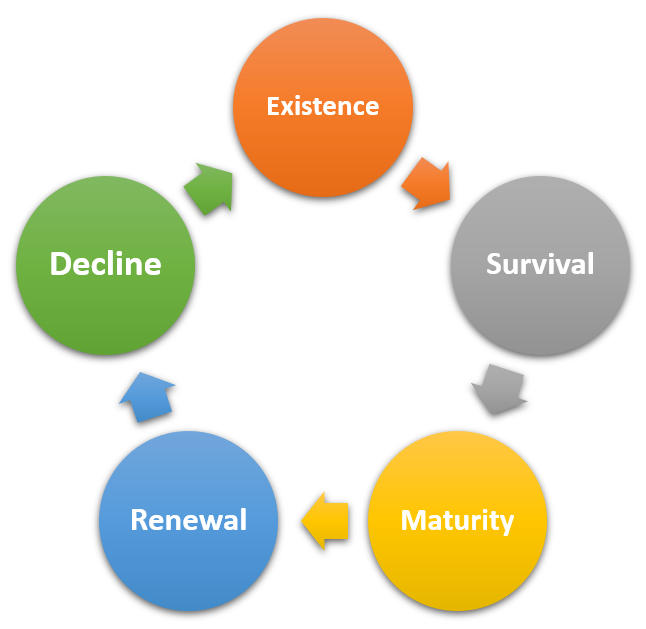The organizational life cycle is the life cycle of an organization from its creation to its termination. It also refers to the expected sequence of advancements experienced by an organization, as opposed to a randomized occurrence of events. The relevance of a biological life cycle relating to the growth of an organization, was discovered by organizational researchers many years ago. This was apparent as organizations had a distinct conception, periods of expansion and eventually, termination.
Comparisons between organisations and living organisms originated as early as 1890 by the economist Alfred Marshall who compared firms with trees in the forest, using the metaphor: “But here we may read a lesson from the young trees of the forest as they struggle upwards through the benumbing shade of their older rivals”. Sixty years later, Kenneth Boulding presented the idea that organisations pass through a lifecycle similar to that of living organisms. Shortly after, Mason Haire was among the initial researchers who suggested that organisations may adhere to a certain path of uniformity in their course of expansion.
Subsequently, research has been done on the organizational life cycle for more than 120 years and can be found in various literature on organizations. Examples include the various stages in an organization’s life cycle, phases of growth experienced by an organization during expansion and implications for these phases of growth. Review of the main organizational life cycle theories, with stages, main idea and authors is given in the table below.
Stages
Generally, there are five stages to an organization’s life cycle

Stage 1: Existence: Commonly known as the birth or entrepreneurial stage, “existence” signifies the start of an organization’s expansion. The main importance is centered around the acknowledgement of having an adequate number of customers to keep the organization or business active.
Stage 2: Survival: At this stage, organizations look to pursue growth, establish a framework and develop their capabilities. There is a focus on regularly setting targets for the organization, with the main aim being to generate sufficient revenue for survival and expansion. Some organizations enjoy adequate growth to be able to enter the next stage, whilst others are unsuccessful in achieving this and consequently fail to survive.
Stage 3: Maturity: This stage signifies the organization entering a more formal hierarchy of management (hierarchical organization). A frequent problem encountered at this stage would be those associated with “Red Tape”.[40] Organizations look to safeguard their growth as opposed to focusing on expansion. Top and middle-level management specialize in different tasks, such as planning and routine work respectively.
Stage 4: Renewal: Organizations experience a renewal in their structure of management, from a hierarchical to a matrix style, which encourages creativity and flexibility.
Stage 5: Decline: This stage initiates the death of an organization. The decline is identified by the focus on political agenda and authority within an organization, whereby individuals start to become preoccupied with personal objectives, instead of focusing on the objectives of the organization itself. This slowly destroys the functionality and feasibility of the entire organization.
Limitations
According to the organizational life cycle models, growth in size leads to business issues that firms can solve by adopting only one possible organizational configuration, following a deterministic organizational approach. Recently, scholars challenged this view and propose conceiving of organizational life cycle as an evolutionary process, which calls for a variety of equifinal organizational solutions.